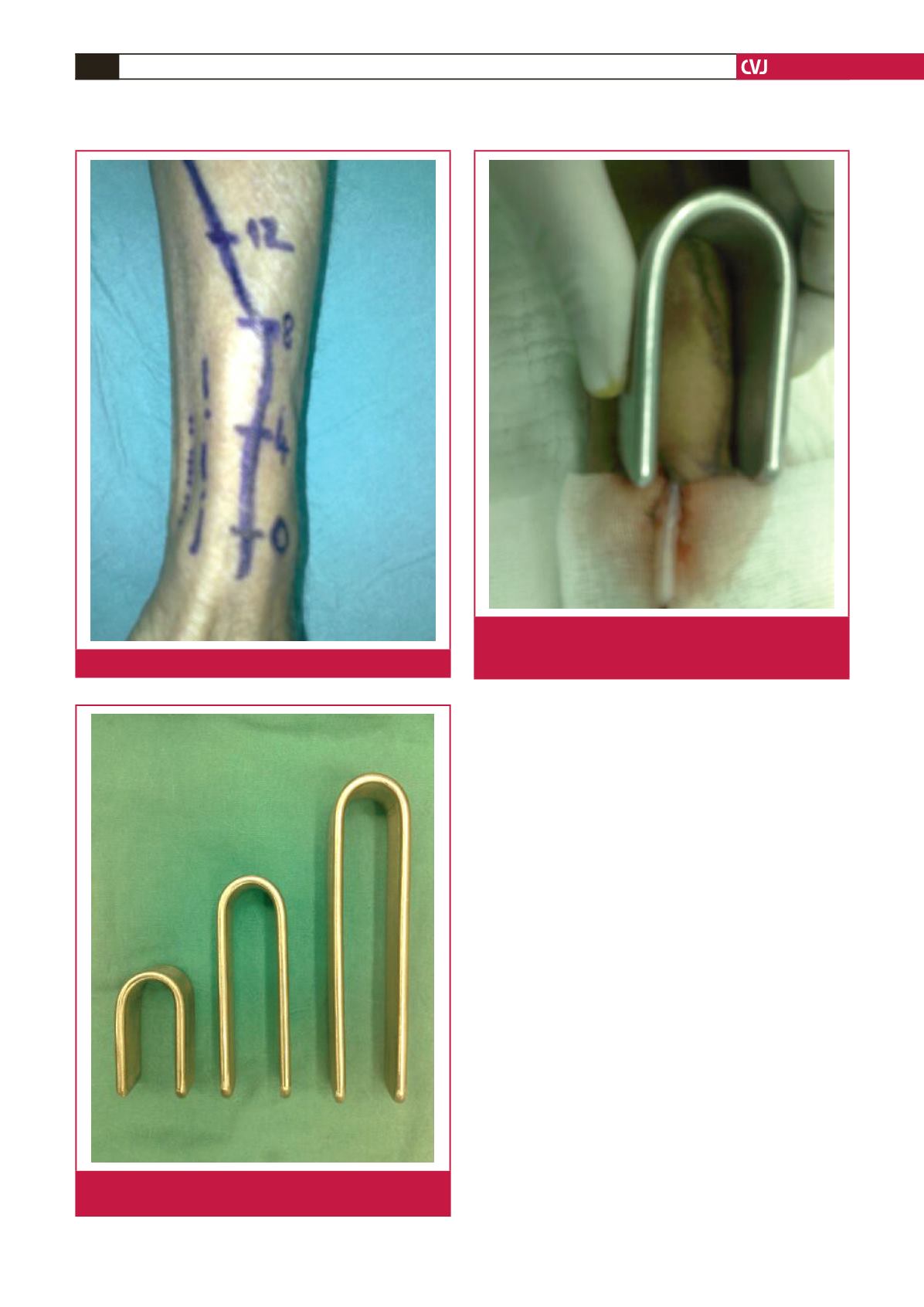

CARDIOVASCULAR JOURNAL OF AFRICA • Volume 26, No 1, January/February 2015
42
AFRICA
artery and the cephalic vein was anastomosed end to side to the
radial artery.
Postoperatively, the presence of a trill in the arteriovenous
fistula was examined by palpation. In the first postoperative
hour, flow in the anastomosis and the transverse diameter of the
fistula tract at the 0-, 4-, 8- and 12-cm points were measured with
Doppler ultrasonography.
Statistical analysis
Statistical analyses were performed with SPSS 15.0 software
(SPSS Inc, Chicago, IL). Forty patients were included in
the analysis. Descriptive statistics are presented for numerical
variables (mean, standard deviation, median, minimum and
maximum). If the comparison of two independent groups of
continuous variables provided the assumption of normality,
the
t-
test was used. If it did not provide the assumption of
normality, the Mann–Whitney
U
-test was used. The repeated-
measures ANOVA test was used for repeated-measures statistics.
All values of
p
<
0.05 were taken as significant.
Results
Forty patients were included in the study. Comparison of baseline
clinical characteristics and pre-operative vein diameters between
the two groups are shown in Table 1. U-vein compressors were
used in one group of 20 patients (10 males, mean age 57.9
±
8.12
years) and not in the other group of 20 patients (12 males, mean
age 55.8
±
7.52 years). There were no significant differences in
Fig. 1.
Venous mapping.
Fig. 2.
Stainless steel U-vein compressors. Their lengths
were 5, 10 and 15 cm with a 3-cm width.
Fig. 3.
Application of U-vein compressors, which were occlud-
ing the side branches and proximal segments of the
cephalic vein externally.



















